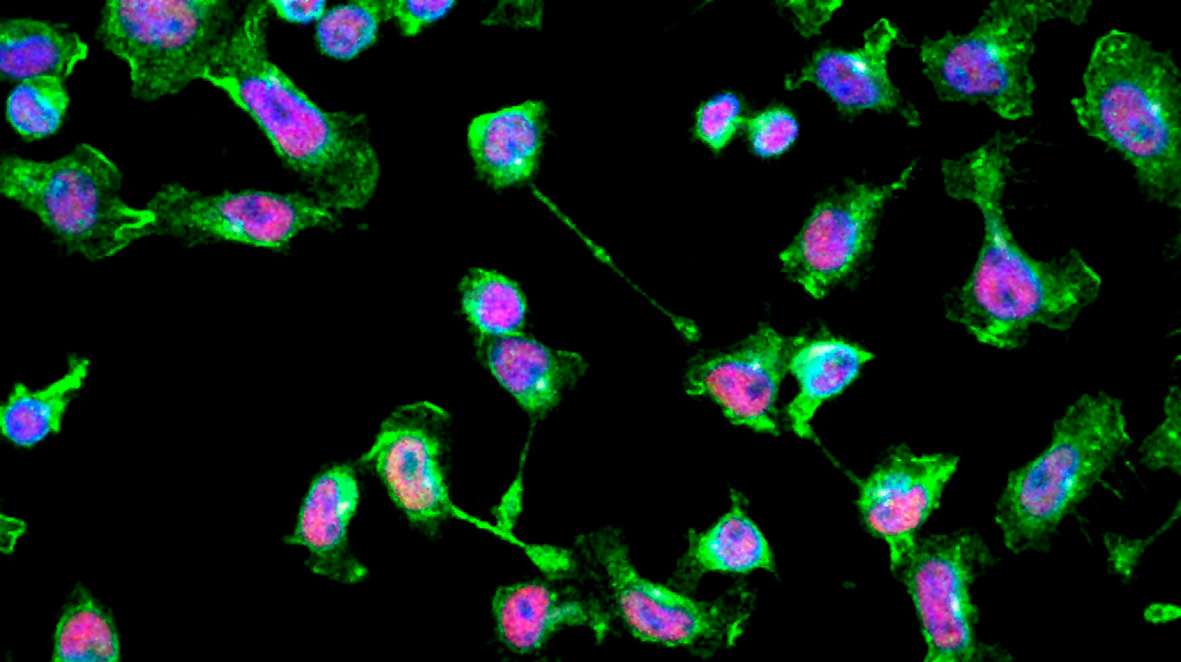
A study led by the group of Dr. Javier Redondo-Muñoz, from the Department of Biomedicine of the Margarita Salas Center for Biological Research (CSIC) and members of the CSIC Cancer Connection, has revealed new mechanisms that regulate the invasion and dissemination of acute lymphoblastic leukemia cells. The research, which has just been published in the journal Biomedicine and Pharmacotherapy, focuses on the LSD1 protein. This key enzyme produces alterations in histones, proteins responsible for regulating DNA, and its inhibition has been suggested as a possible therapeutic strategy in cancer treatment.
Acute lymphoblastic leukemia (ALL) is the most common pediatric cancer, characterized by the uncontrolled proliferation of T and B lymphoblasts. ALL cells use a variety of migratory strategies to spread through three-dimensional environments, the bloodstream, and secondary organs. The LSD1 protein is known to be involved in the pathophysiology of ALL, but its specific role in leukemic cell migration remains poorly understood.
This study, performed in collaboration with researchers from the University of Manchester and the Hospital Niño Jesús in Madrid, has shown that inhibition of LSD1 has a dual effect on ALL cells: it increases the invasive capacity of leukemic cells in three-dimensional environments but also reduces their ability to migrate, extravasate, and colonize tissues in in vivo models.
Gonzalez-Novo et al. used cell lines and primary samples obtained from ALL patients. The results revealed that LSD1 inhibition promoted an elongated and more invasive cell phenotype associated with increased nuclear deformability, facilitating the invasion of leukemic cells in a three-dimensional environment.
In addition, the use of two complementary in vivo models, an immunodeficient mouse model and a zebrafish embryo model developed in collaboration with Adam Hurlstone's group at the University of Manchester, allowed researchers to observe that inhibition of LSD1 decreased their ability to migrate into tissues, cross endothelial barriers and colonize new organs.
This work provides key information on how LSD1 inhibition can have differentiated effects at different stages of leukemic progression, highlighting the need to design specific therapeutic strategies that address each phase of this disease. It has been carried out within the framework of Project PID2023-150232OB-I00 financed by MICIU/AEI /10.13039/501100011033/ and by FEDER funds “A way of doing Europe”.
Reference: Dual effect of targeting LSD1 on the invasiveness and the mechanical response of acute lymphoblastic leukemia cells. Raquel González-Novo, Marina Armesto, África González-Murillo, Marcel Dreger, Adam F.L. Hurlstone, Ana Benito, Rafael Samaniego, Manuel Ramírez, Javier Redondo-Muñoz (2025) Biomedicine & Pharmacotherapy, 183, 117830. https://doi.org/10.1016/j.biopha.2025.11783

